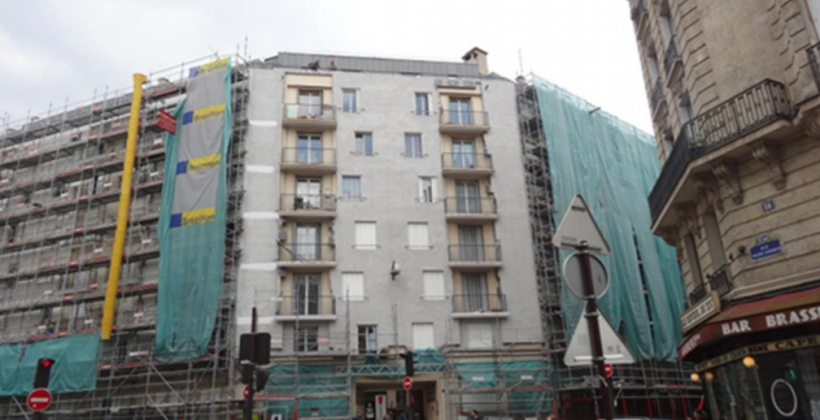
Location
Description
The French demonstration site of the BEEM-UP project is located in the centre of Paris. The demonstration building is surrounded by buildings of similar height and is composed of 87 dwellings built around 1950. In 1993, the building was renovated (outer insulation, double-glazed windows, boilers), but it needed a major upgrade to become a pilot and an example for bringing the rest of the housing park to the low energy standard for renovated buildings, with a consumption target of less than 104 kWh/m²/yr for HVAC, hot water and lighting.
Demo Site Expected Impact
The demonstration site in Paris consists of an overall gross floor area of 5759 m² (heated area: 4352 m²) that has been refurbished in the project. The monitored energy values before the intervention were 351 kWh/m²/yr and 149 kWh/m²/yr after the project. The results show that the heating demand for space heating exceeded 234 kWh/m² per year and represented the largest energy consumption. The interventions for the retrofit reduced the space heating demand to below 73 kWh/m²/yr, and the electricity needs were cut by more than half, from 100 kWh/m²/yr to 47 kWh/m²/yr.
The CO2 emissions and total primary energy for the design and monitoring were calculated using the LCA Ecoinvent database, although the BEEM-UP project did not set any goals regarding the reduction of CO2 emissions. The reduction of CO2 amounts to 161 tonnes per year. Regarding the overall primary energy saving, the objective of BEEM-UP was saving 75 % on heating consumption and 45 % on domestic hot water. The monitored results show that the primary energy savings add up to 2044 MWh/yr.
Important differences were found between the expected savings and the real performance of the systems. The following explanation can account for these differences:
- no savings were achieved for the domestic hot water consumptions due to the large amount of energy lost in the DHW distribution circuit;
- the air exchange rates before refurbishment were not measured (they could have been higher or lower than assumed) and this parameter can have a large influence on the calculated results, particularly in terms of heating consumptions;
- the ICT savings were based only on assumptions;
- the room temperatures before refurbishment could have been lower than calculated, because in some cases not all the rooms were heated;
- the efficiency of the old building services could not be calculated precisely; only assumptions could be made (no information was available about the efficiency of the old components: boiler, distribution losses, uncertainty about the air-change rates);
- the consumption of warm water may differ considerably from the calculations (before and after) because the consumption is very much dependent on tenants’ behaviour. More knowledge on behavioural issues could have enabled a better estimation.
Future projects need to take these issues into account in order to help improve the estimate impact and improve the output.
Technologies
Buildings and energy
The implemented measures feature:
Energy efficiency in buildings
- Retrofitting the building envelope
- Thermal envelope was improved, including increased insulation on walls, basement ceiling and roof
- New PVC double-glazed windows
- Building services (HVAC and lighting)
- Optimised lighting: all public spaces were fitted with low-energy light systems and the tenants were encouraged to switch to low-energy lighting
- New controlled mechanical ventilation system was installed
- Building integrated renewable energy sources
- Photovoltaics
Energy systems integration
- Thermal collectors
ICT
- Building management system
- ICT energy management system was installed including cost optimal control solutions, from individual solutions like chronostat, radiator zone control and meter data for individual billing to full home automation
The investment cost for the intervention was EUR 738/m², making a total of EUR 4 251 000 excluding VAT.
The financial return for the project is more than 30 years. This is relatively long, but as a demonstration for a non-mature innovation under testing it can in fact be considered as short and could improve using the lessons learned. The rental value after refurbishment would also positively affect the return on investment, which was not taken into account in the calculation.
Thematic Field
- Refurbished Building(s)
